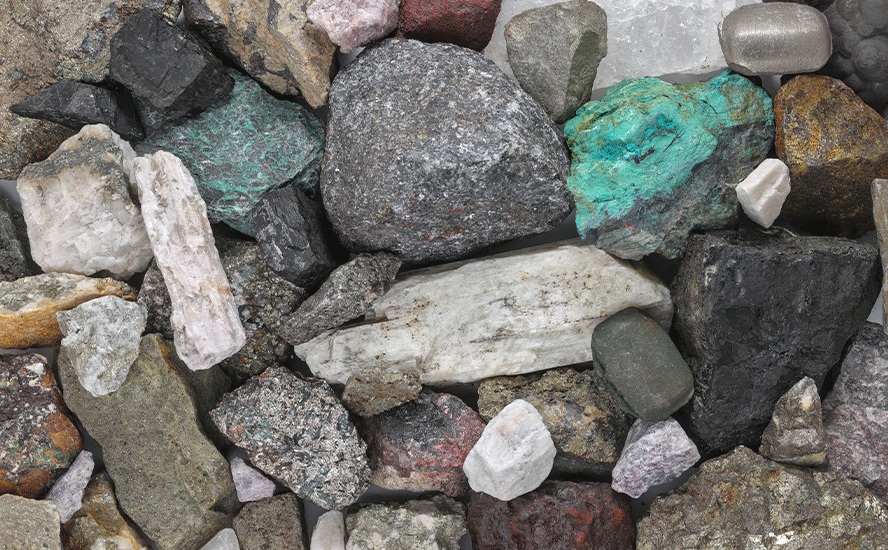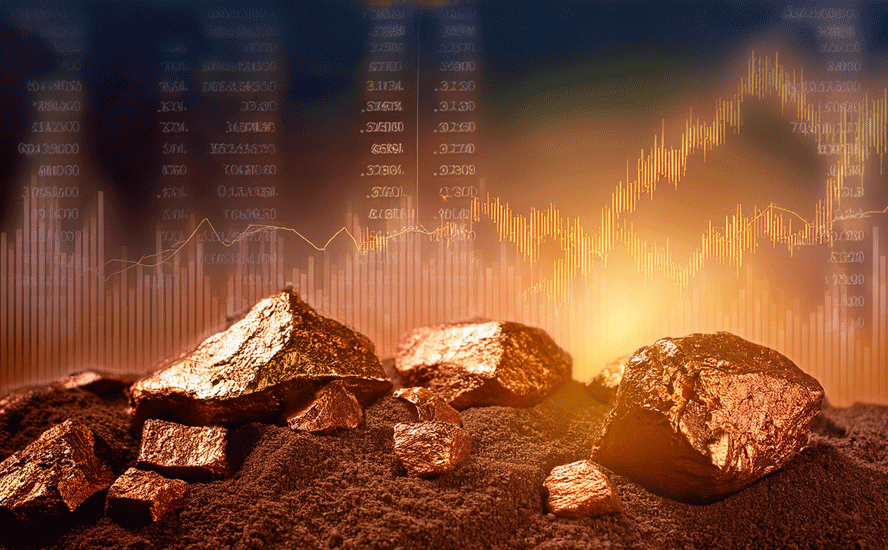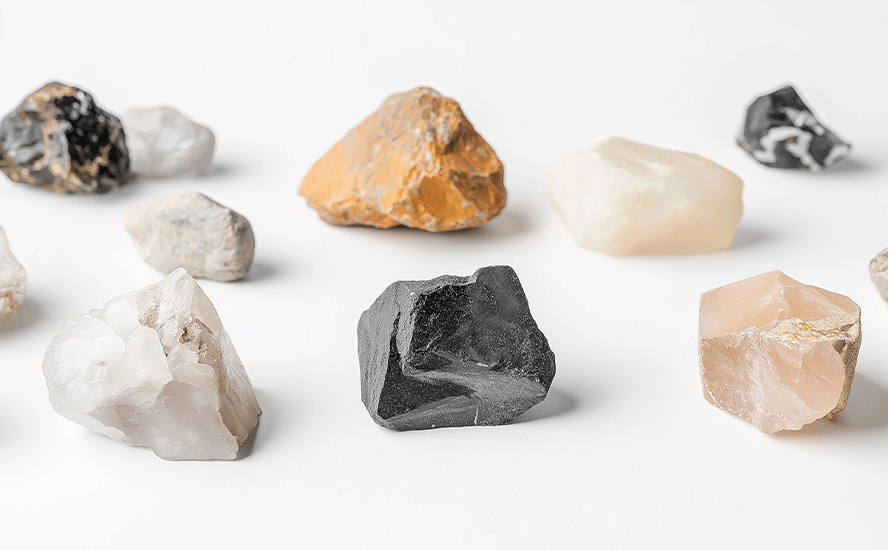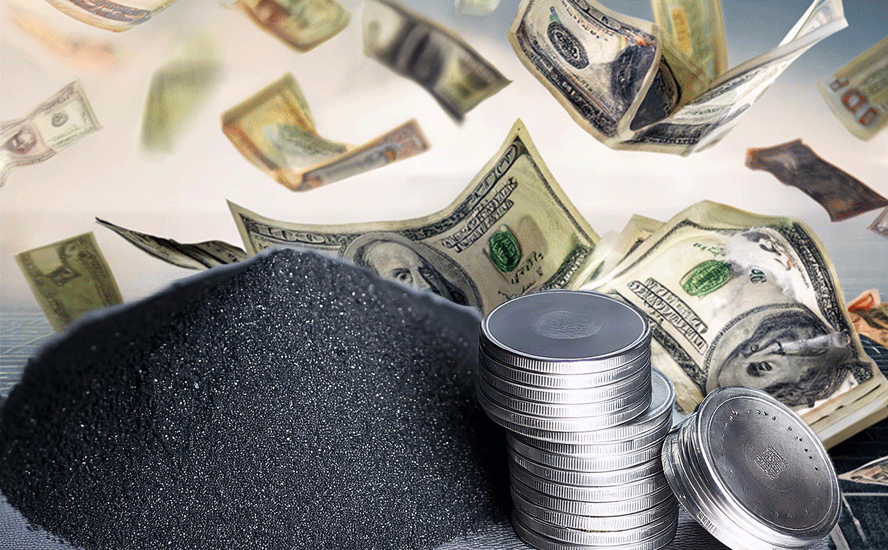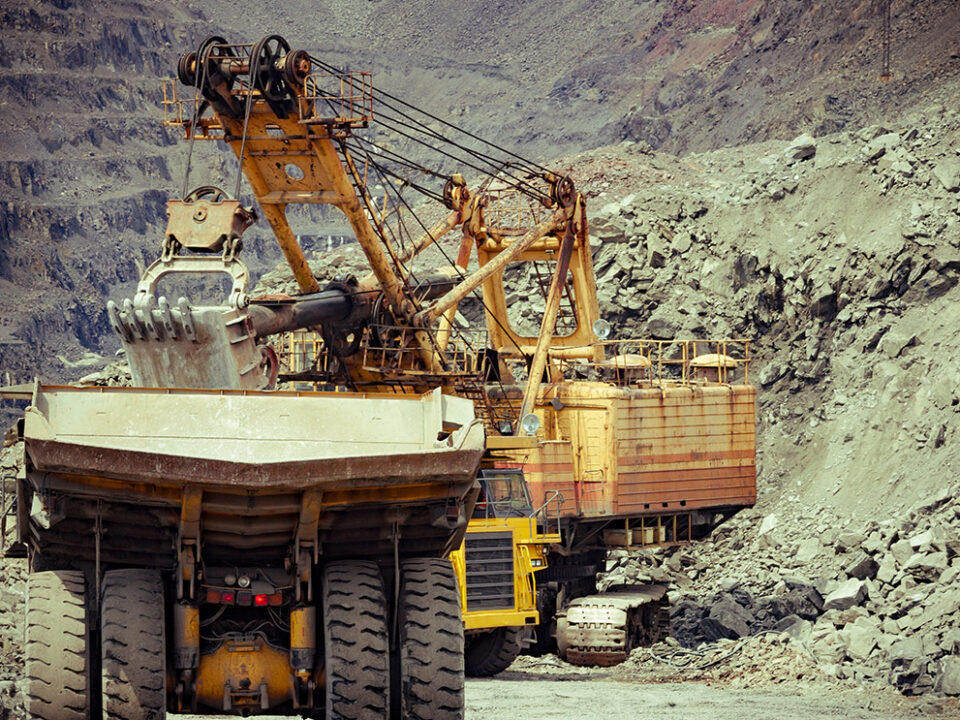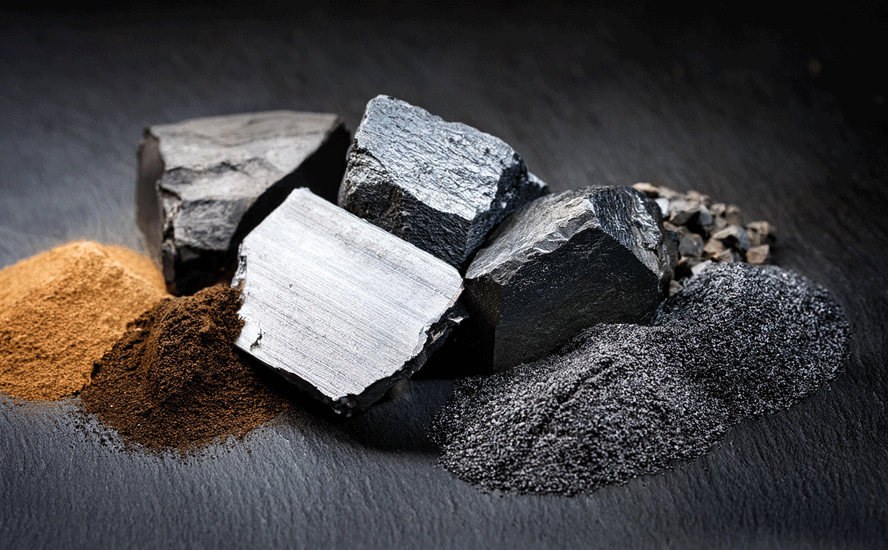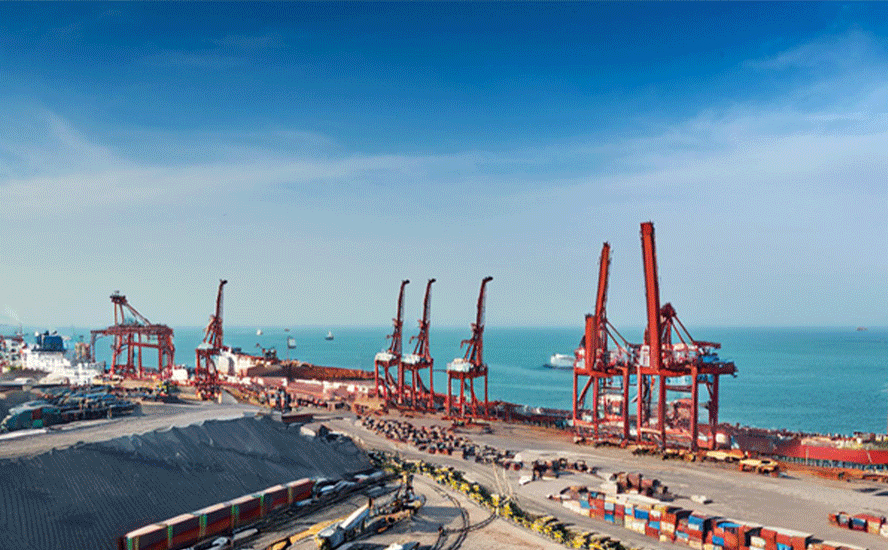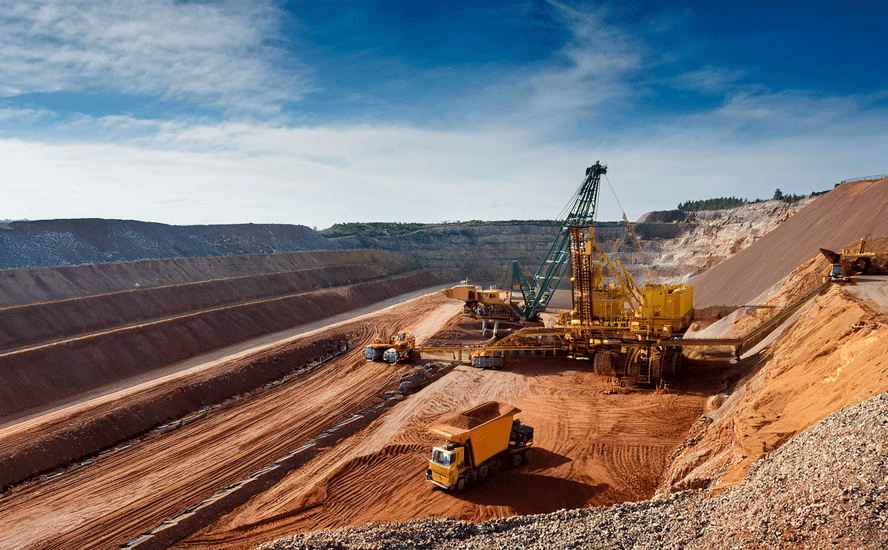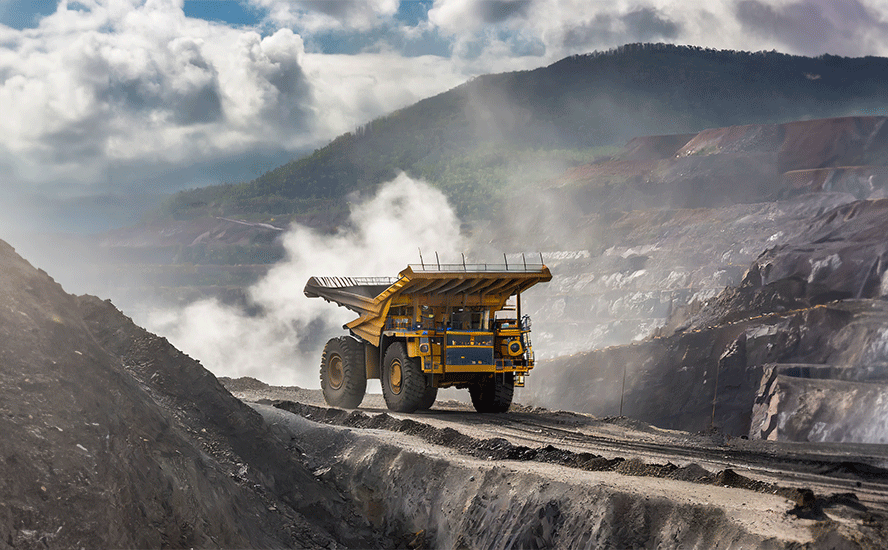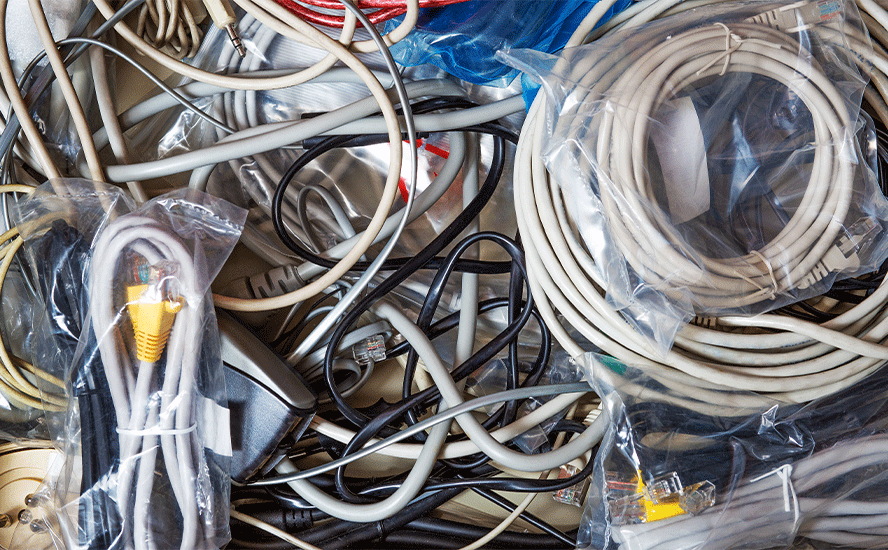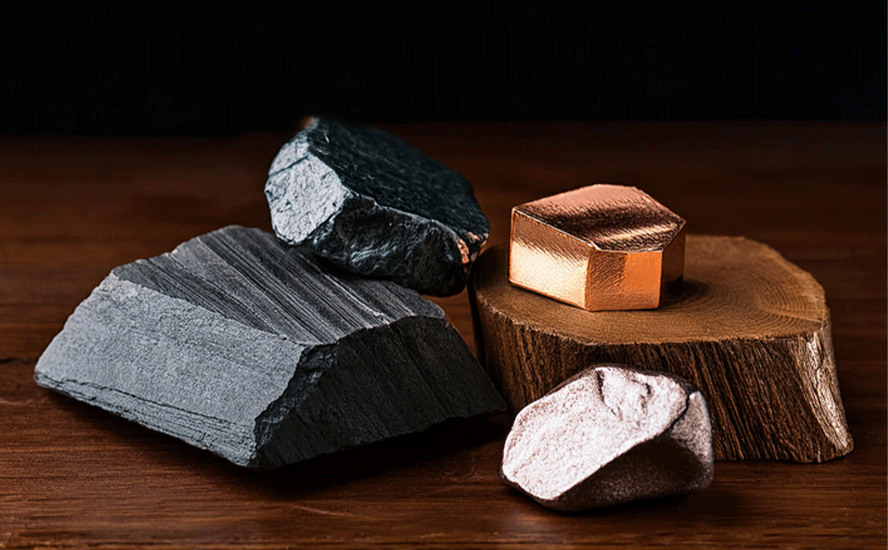Trade war will hasten bull market for rare earths

2019.05.22
When the Canadian prime minister or US president visits an auto plant, people are reassured that the government understands the importance of the auto sector for jobs and exports. When the Chinese president recently toured a rare earth company on home soil, it invoked fear among China’s trading partners, so critical are these metals for the supply chains of North American high-technology firms.
The presidential visit sent a very clear signal that rare earths could soon become bargaining chips in the trade war that is heating up between the US and China.

Consider that the United States relies on China, the dominant global supplier, for about 80% of its rare earth elements.
Rare earth metals, alloys and magnets needed by US defense contractors come either directly or indirectly from mostly China – it either mines or processes about 90% of all rare earth oxides.
A Chinese embargo on rare earths would be equally devastating to US industry, especially considering their use in permanent magnets – necessary for electric vehicles and wind turbines – two of the most important technologies to wean Americans off of fossil fuels.
Among the US companies that would be most badly hurt either from export restrictions on rare earths or outright bans, are Apple, Tesla, General Electric, Western Digital, Seagate and Cree, Inc.
In this article we take a look at what Chinese restrictions on rare earth elements could mean for the rare earths market.
Three steps to (trade) war
Last Friday, citing security risks to the US due to the danger of Huawei’s 5G network being used for espionage, President Trump signed an order that restricts Huawei and its competitor, ZTE Corp., from selling equipment in the US. American chipmakers like Intel Corp and Qualcomm Inc have confirmed they won’t supply software and components to Huawei until further notice.
Then on Sunday, Reuters reported that Google’s parent company Alphabet has suspended all business with Huawei that requires transfer of hardware, software and technical services except those available publicly via open source licensing. That’s a big deal. It means that the tech giant will no longer have access to updates to Google’s Android operating system, thus hobbling its business outside of China, where Huawei does about half of its smart phone sales. Most of Google’s products are banned in China. Alphabet’s suspension could delay Huawei’s rollout of 5G (the latest cellular network) services throughout the world, and even kill its ambition to become the world’s leading smart phone brand.

Just hours after the Trump administration added Huawei to a blacklist that makes it very difficult for the Chinese telecom company to do business with American firms, China’s president Xi Jinping went to a rare earth’s facility in Jiangxi province.
So with China and the United States now into a full-blown trade war, and two of China’s star companies under fire, a likely target is rare earths, the 17 elements in the Periodic Table that are used in dozens of military and industrial applications including electric vehicle motors, wind turbines and missile guidance systems.
Xi’s visit to JL MAG Rare-Earth Co Ltd had an immediate effect on the Chinese rare earths market. Reuters reports the MVIS Global Rare Earth/Strategic Minerals Index, which tracks the shares of 20 producers from 10 countries, including China, Australia and Canada, jumped 6.4% in its biggest one-day gain since October 2011, last Tuesday.
Among the top gainers were JL MAG Rare-Earth Co which soared 10%, Innuvo Technology Co which increased 10%, and Hong Kong-based China Rare Earth Holdings which vaulted 80%.
Beijing said on Monday it would raise tariffs on U.S. rare earth metal ores from 10 percent to 25 percent from June 1, making it less economical to process the material in China. That’s clearly a red herring.
The only US producer of rare earths, currently, is the consortium that purchased the Mountain Pass rare earths mine in California. And their total production, in the scheme of the overall global REE concentrate market, is small. There is an interesting twist here though – one of the three companies in the consortium is Chinese, and that’s where Mountain Pass rare earths concentrate gets shipped, so that it can be further processed into oxides, then transported back to the US for sale to end-users.
Because Beijing as a one-party state has the power to impose an industry-wide quota on rare earth production – something that would never get around anti-trust legislation in a Western country – and the fact that China has a global monopoly on rare-earth production and refining, China can easily spike rare earth prices.
On March 15 the Chinese government attempted to do just that, by restricting the domestic rare earths production quota. Reuters reported the mining output limit for the first half of 2019 was set at 60,000 tonnes, down 18.4% from the first six months of 2018. The smelting and separation quota was set at 57,500 tonnes, 17.9% lower than H1 2018.
Across-the-board rare earth mining production cuts within China are already happening. At AOTH we think the Chinese are going to further cut their annual production quotas for rare earths.
Hitting American rare earth metal exports with tariffs then, is a red herring, in terms of what drives the rare earth market. But the imposition of export restrictions, perhaps aimed directly at the US, would almost certainly, by exponentially higher prices, pump more steam into a rare earth bull market.
Of course, China could also cut their rare earth exports to the US 100%, just as the country did in 2010 when it banned shipments of rare earths to Japan over a territorial dispute. The result was a massive rise in rare earth oxide prices, and a corresponding flood of junior rare earth companies that formed to take advantage of high REE prices.
‘1984’?
In George Orwell’s book ‘1984’, the British novelist paints a dystopian global landscape of three “superstates” – Oceania, Eurasia and Eastasia.
These three regions are ruled by totalitarian dictatorships and are constantly at war with one another.
The impetus for China taking the extreme measure of cutting or boycotting supplies of rare earths to the United States – the plot line, by the way, for an episode of the Netflix series ‘House of Cards’ – would be the continuance of the 25% tariffs. It’s possible the tariffs could come off, just as the US and Canada agreed to do in moving forward on the re-negotiated NAFTA, but some of the commentary around this issue leads to the conclusion that conflict, and tariffs, between the US and China is here to stay.
Why is that? Because although this trade war started with seemingly benign and boring duties on aluminum and steel, it’s really about technology and how both superpowers are positioning themselves in the world order – in other words, it’s geopolitical, and from what it looks like to us, we are in fact moving away from globalization and towards a world of trading blocks, just like in ‘1984’.
Here’s Zero Hedge, writing about the enormous implications of the trade war with China:
Because – as we explained last December – what is really at the basis of the ongoing civilizational conflict between the US and China, a feud which many say has gradually devolved into a new cold war if few top politicians are willing to call it for what it is, are China’s ambitions to be a leader in next-generation technology, such as artificial intelligence, which rest on whether or not it can design and manufacture cutting-edge chips, and is why Xi has pledged at least $150 billion to build up the sector. China’s plan has alarmed the US, and chips, or semiconductors, have become the central battlefield in the trade war between the two countries. And it is a battle in which China has a very visible Achilles heel.
But what if the “trade” conflict with China is about more than even technological development? If, as Bank of America assumes, the US-China trade war is about geopolitics and not just economics, as the bank notes, the “implications for markets are enormous.”
The website goes on to explain three reasons why China managed to achieve such a fast rate of growth in only a few decades: American imports of Chinese goods, reflected in the trade imbalance between the US and China that Trump rails against; China’s technology and intellectual property, gained by forcing foreign companies to transfer technology by setting up Chinese-controlled joint ventures; and commodity purchases.
The country is the world’s largest importer of oil, coal, iron ore, copper and soybeans. Although this has given China tremendous clout over the prices of these goods, it’s also put Beijing in a dependent situation with economic competitors like the US which last year became the largest oil producer.
The Globe and Mail’s Barrie McKenna agrees, arguing the trade war is really a war for tech supremacy. In a column published on Saturday, McKenna writes:
The tariff fight between the two countries is a proxy for a much broader struggle for dominance in the digital economy. The tariffs on hundreds of billions of dollars of goods are just a prelude. And even an eventual deal to lift them won’t resolve the underlying rift.
“This isn’t going away,” insists trade economist Dan Ciuriak, a fellow at both the C.D. Howe Institute and the Centre for International Governance Innovation.
“The basis for competition between nations has shifted from brains to brute force computing, and China excels at that.”
The showdown predates Mr. Trump, and it will likely endure long after he’s gone.
Even a full breakdown of China-U.S. trade would deliver a relatively small hit to these two economic titans – perhaps a loss of 2 per cent of gross domestic product for each country, Mr. Ciuriakestimates. The tariffs imposed so far cover US$260-billion of trade, but he says that’s little more than a “skirmish” in a much longer game.
The fight is not about the price of U.S. pork and soybeans, or Chinese TVs and washing machines. It’s about a rivalry in technology.
Over at Project Syndicate, economics professor Nouriel Roubini argues that China and the US are gradually moving towards war – maybe not a hot war, although the constant tensions in the South China Sea suggest otherwise – but likely a cold war, which is what historically happens when an emerging power (China) confronts an established power (the US), something called “the Thucydides Trap”.
What started as a trade war now threatens to escalate into a permanent state of mutual animosity. This is reflected in the Trump administration’s National Security Strategy, which deems China a strategic “competitor” that should be contained on all fronts.
A full-scale cold war thus could trigger a new stage of de-globalization, or at least a division of the global economy into two incompatible economic blocs. In either scenario, trade in goods, services, capital, labor, technology, and data would be severely restricted, and the digital realm would become a “splinternet,” wherein Western and Chinese nodes would not connect to one another.

Are we not already seeing this split? The US has imposed sanctions on ZTE and Huawei over allegedly selling into US-sanctioned Iran and has just blacklisted Huawei and restricted buying and selling between Huawei, ZTE and US companies. There are 25% tariffs on $250 billion worth of Chinese products, and Beijing has responded in kind.
The US has put its differences aside with Canada and Mexico, dropping steel and aluminum tariffs in order to concentrate on the real target: China.
Meanwhile, China is progressing its Belt and Road Initiative. BRI consists of a vast network of railways, pipelines, highways and ports that would extend west through the mountainous former Soviet republics and south to Pakistan, India and southeast Asia.
So far over 60 countries, containing two-thirds of the world’s population, have either signed onto BRI or say they intend to do so. According to the Center for Foreign Relations, the Chinese government has already spent about $200 billion on the growing list of mega-projects projects including the $68 billion China-Pakistan Economic Corridor. Morgan Stanley predicts China’s expenditures on BRI could climb as high as $1.3 trillion by 2027.
An Asia geopolitical expert says that, while BRI satisfies a number of economic goals for China – including expanding its supply chains, accessing overseas labor, and preventing massive layoffs when companies run out of domestic infrastructure to build – the over-riding goal is regional influence.
For a deep dive on BRI read our Stop feeding the ‘Belt and Road’ trojan horse
Two economic blocks drawing closer together – the US, Canada and Mexico, versus China and the Eurasian countries it wants to bring into its BRI orbit. Toss the European Union into the US mix, which admittedly is more unraveling than raveling, considering Brexit, and you have something that eerily resembles the superstates of ‘1984’.
Defense Metals
Into this adversarial world of trading blocks, so different from the world envisioned by globalization, enter Defense Metals (TSX-V:DEFN, OTCQB:DFMTF, FSE:34D), a small-cap junior aiming to bring a rare earths deposit in central British Columbia, into production.
But first, a little context.
Raising money for exploration in the junior resource market right now is difficult, to put it mildly. According to Oreinc, a Vancouver-based research and advisory firm, Canadian-listed mining companies are raising less money and inking fewer deals.
As reported by the Financial Post, Oreinc tracked around 1,400 Canadian mining companies between $100 million and $1.5-billion valuations. It found that in 2018, cannabis companies raised $4 billion versus $217 million by mining companies.
The situation is completely reversed comparing the top 10 Toronto Venture-listed companies in 2016 versus 2019. In 2016 there were nine mining companies and one pot company on the list; this year there are nine marijuana companies and one mining company. To learn why the bloom on the cannabis bud of Canadian-listed pot producers has dried up, read our Cannabis-space green shoots not what people think
What does this mean for the rare earths market? Well, as financings dry up, so does the exploration pipeline. Companies that would normally be out there kicking rocks, sampling, drilling and drumming up shareholders, are in a holding pattern, waiting for the market to come back. In the meantime, the supply of rare earths is not growing, while the demand certainly is; shrinking exploration, ergo, flat or depleted supply, equals higher prices.
One company that is not waiting for the tide to change is Defense Metals.
The first assay results of a bulk sample program at DEFN’s Wicheeda Project have been released…they’re spectacular. A 30-tonne random sample taken from the deposit revealed the presence of four defense and clean energy (magnet/ lithium-ion battery) rare earth elements: cerium (Ce), lanthanum (La), neodymium (Nd) and praseodymium (Pr).
These results are impressive for three reasons:
- The presence of neodymium and praseodymium is critical, because these two REEs are used in the manufacture of Nd-Pr-Iron-Boron permanent magnets that go into a number of high-tech applications.
- All 4 rare earth elements are used in the manufacture of lithium-ion batteries found in electric vehicles.
- The results indicate a potential light rare earth deposit of significant value.
Defense Metals will be targeting magnet manufacturers, lithium-ion battery manufacturers, green energy companies and defense contractors to buy their rare earth concentrate and oxides.
Rare earths are great multipliers, they are used in making everything from computer monitors and permanent magnets to lasers, guidance control systems and jet engines. In most cases there are no substitutes.
Shareholders of Defense Metals can expect significant news flow starting soon. Metallurgical testing of the 30 tonne bulk sample continues and the company is planning on a massive drill program for 2019 leading to a 43-101 compliant resource estimate this fall.
Conclusion
While the US-China trade war is negative for many people on many fronts, rare earths companies are not among them. In fact, if China goes forward and restricts its exports of rare earth elements to the United States, prices of REEs will definitely rise. That is good news for rare earth explorers. The prices of REEs have already climbed this year due to slashed production quotas in China; higher export restrictions will only fan the flames of a hotter rare earths market.
China has a lock on REE supply and the only significant non-Chinese supplier is Australia’s Lynas, which processes its REEs in Malaysia. Lynas is having to revamp its entire mine-to-processor chain. We just learned that the Australian company is going to relocate its processing plant from Malaysia to Western Australia, in order to appease regulators unhappy about waste disposal. Lynas is also fending off a takeover attempt. In the news May 21st was an interesting piece regarding Lynas and Blue Line Corp. Because of a lack of REE processing outside China the two companies are teaming up to build the first rare earth processing plant in the US.
At Ahead of the Herd we’ve identified a project in northern BC that has all the elements in place for a successful, small-scale rare earth operation: Defense Metals’ Wicheeda Project.
Read more about the project and the company’s path to production
Defense Metals Corp
TSX-V:DEFN Cdn$0.16 May 21st
Shares Outstanding 27.7m
Market cap Cdn$4.43m
Defense Metal website
*****
Richard (Rick) Mills
Ahead of the Herd Twitter
Ahead of the Herd FaceBook
Legal Notice / Disclaimer
This document is not and should not be construed as an offer to sell or the solicitation of an offer to purchase or subscribe for any investment. Richard Mills has based this document on information obtained from sources he believes to be reliable but which has not been independently verified. Richard Mills makes no guarantee, representation or warranty and accepts no responsibility or liability as
to its accuracy or completeness. Expressions of opinion are those of Richard Mills only and are subject to change without notice. Richard Mills assumes no warranty, liability or guarantee for the current relevance, correctness or completeness of any information provided within this Report and will not be held liable for the consequence of reliance upon any opinion or statement contained herein or any omission. Furthermore, I, Richard Mills, assume no liability for any direct or indirect loss or damage or, in particular, for lost profit, which you may incur as a result of the use and existence of the information provided within this Report.
Defense Metal Corp (TSX.V:DEFN), is an advertiser on Richard’s site aheadoftheherd.com. Richard owns shares of DEFN
Legal Notice / Disclaimer
Ahead of the Herd newsletter, aheadoftheherd.com, hereafter known as AOTH.Please read the entire Disclaimer carefully before you use this website or read the newsletter. If you do not agree to all the AOTH/Richard Mills Disclaimer, do not access/read this website/newsletter/article, or any of its pages. By reading/using this AOTH/Richard Mills website/newsletter/article, and whether you actually read this Disclaimer, you are deemed to have accepted it.
